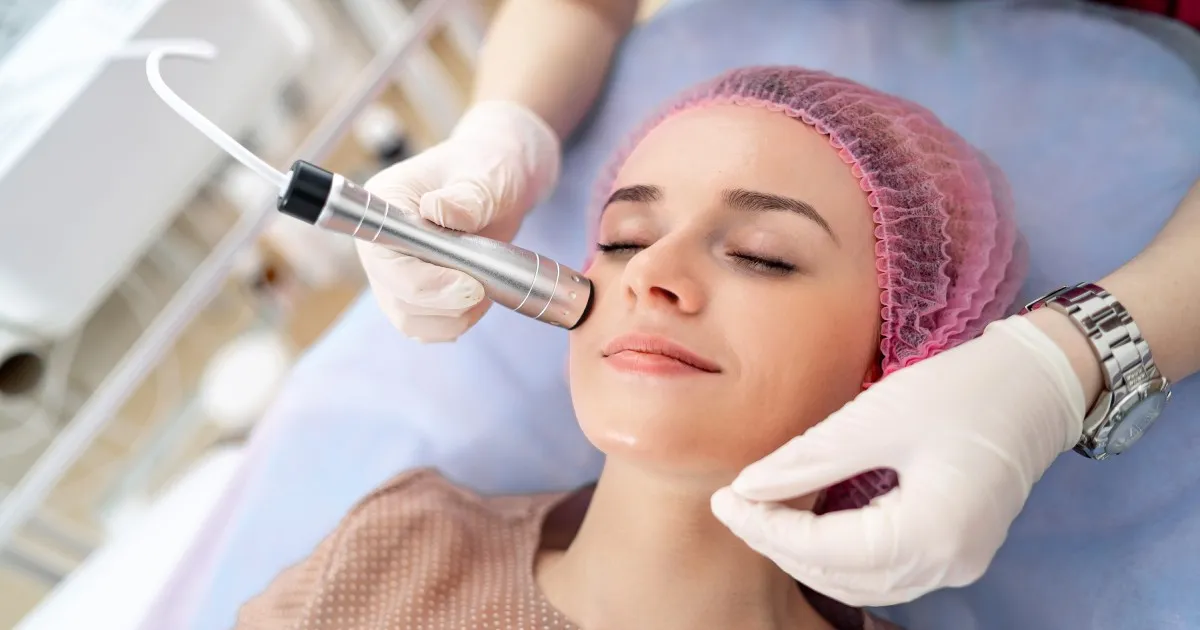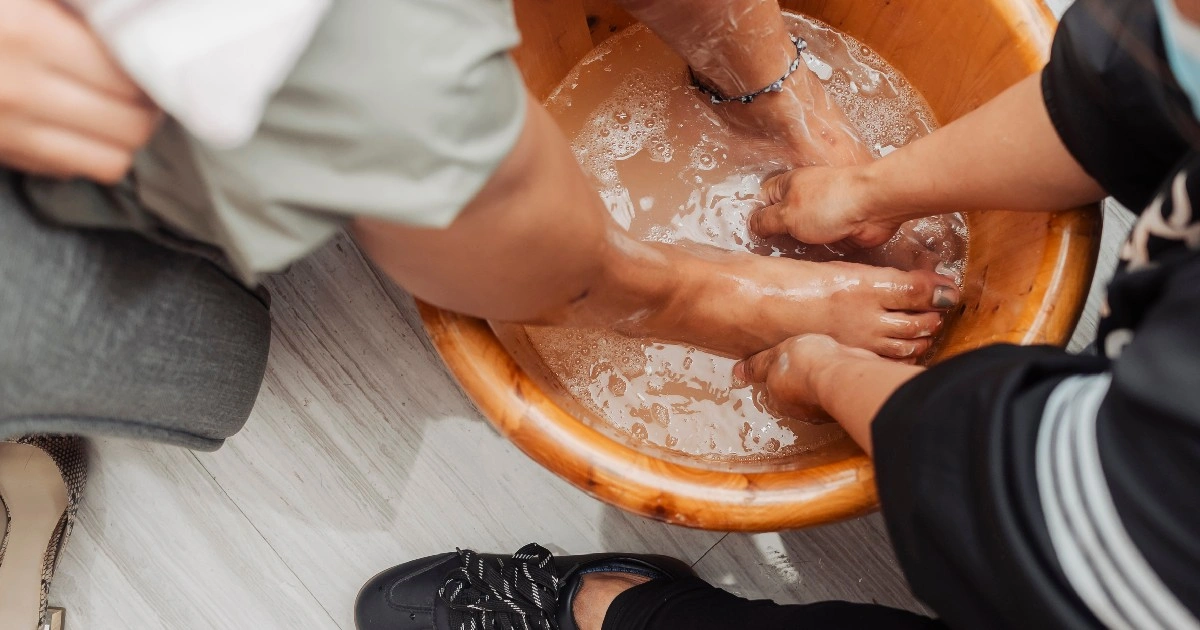Table of Contents
Are you frustrated with stubborn dark spots and uneven skin tone that won’t fade no matter what creams you try? Sun damage typically leaves lasting marks on your skin that regular products simply can’t address.
This blog will explain how chemical peels offer an effective solution for hyperpigmentation, sun damage, and uneven skin tone. Keep on reading and discover how chemical peels can address sun-damaged skin and uneven complexion.
Sun Damage and Its Effects on Skin
Before exploring treatment options, it’s important to understand what happens to your skin when it’s damaged by the sun. UV radiation penetrates the skin’s surface, causing melanin production to increase. While melanin provides some natural protection, prolonged exposure leads to irregular melanin distribution, resulting in dark spots and patches.
Additionally, UV rays break down collagen and elastin. These are known essential proteins that keep the skin firm and elastic.
The visible results of this damage include:
- Hyperpigmentation (brown spots)
- Uneven skin tone
- Rough texture
- Fine lines and wrinkles
- Dull complexion
These issues can be frustrating to address with over-the-counter products alone, which is why many turn to professional uneven skin tone treatment options like chemical peels.
What Are Chemical Peels and How Do They Work?
Chemical peel treatment involves applying a chemical solution to the skin that exfoliates the damaged outer layers. This controlled injury stimulates the body’s healing response, promoting new cell growth and collagen production. The result? Fresher, less damaged skin is revealed with improved tone and texture.
These treatments work on multiple levels:
- They remove the outer layer of skin containing much of the visible damage
- They disrupt pigment clusters, helping to fade dark spots with peels
- They stimulate collagen production, improving skin elasticity
- They enhance the penetration and effectiveness of skincare products
Types of Chemical Peels for Different Skin Concerns
When it comes to addressing sun damage and uneven tone, not all peels are created equal. Here’s a breakdown of the options:
Superficial Peels
Perfect for mild damage and maintenance, these gentle peels use alpha-hydroxy acids (AHAs) like glycolic and lactic acid or beta-hydroxy acids (BHAs) like salicylic acid.
- Benefits: Minimal downtime, gentle exfoliation, improved texture
- Best for: Early intervention, mild discoloration
- Frequency: Can be done every 4-6 weeks
Medium-Depth Peels
The best peel for hyperpigmentation often falls in this category. Trichloroacetic acid (TCA) peels or Jessner’s solution provides more significant improvement for moderate sun damage.
- Benefits: Noticeable improvement in pigmentation and fine lines
- Best for: Visible sun spots, moderate uneven tone
- Downtime: 5-7 days of peeling and redness
Deep Peels
These powerful treatments use phenol or high-concentration TCA to address severe damage.
- Benefits: Dramatic improvement in substantial sun damage
- Best for: Deep wrinkles, significant discoloration
- Downtime: 1-2 weeks or more
The Science Behind Skin Brightening Chemical Peel Results
Chemical peels work through a carefully controlled inflammatory response. The acids break bonds between skin cells, dissolving the “glue” that holds damaged cells together. This exfoliation triggers:
- Increased cell turnover
- Enhanced melanin regulation
- Stimulated collagen synthesis
- Improved dermal organization
For hyperpigmentation specifically, peels help normalize melanin distribution by removing cells with excess pigmentation and encouraging more uniform cellular development.
Choosing the Right Chemical Peel for Your Skin Type
Several factors determine which chemical peel might be most effective for your specific concerns:
- Skin type and tone: Darker skin requires a cautious approach to avoid post-inflammatory hyperpigmentation
- Severity of damage: More extensive sun damage may require stronger peels
- Sensitivity level: Those with reactive skin may need to start with gentler formulations
- Treatment goals: Different peels target different aspects of sun damage
Consulting with our team is crucial for determining the optimal treatment plan for your unique skin.
Preparing for Your Chemical Peel
To ensure the best results with minimal side effects:
- Consultation: Work with a licensed professional who can assess your skin
- Pre-treatment skincare: Follow recommendations to prepare your skin, which may include using specific products
- Medication adjustments: Discontinue certain products like retinoids 5-7 days before treatment
- Sun protection: Shield your skin from UV exposure before and after treatment
Maximizing Chemical Peel Results: Aftercare Essentials
Post-peel care is vital for healing and enhancing results:
- Sun protection: Daily SPF 30+ is absolutely essential
- Gentle cleansing: Use mild, non-irritating cleansers
- Hydration: Apply recommended moisturizers to support healing
- Patience: Full results may take multiple sessions and several weeks to develop
- Professional guidance: Adhere to aftercare instructions provided by your skincare specialist
Powerful Combinations: Enhancing Results with Complementary Treatments
For those seeking transformative results, combining treatments often delivers enhanced outcomes. Here are two powerful pairings that maximize benefits:
Chemical Peels + Microneedling: The Ultimate Collagen Stimulation
Combining chemical peels for sun damage with microneedling creates a synergistic effect that dramatically improves skin texture and tone. While peels work primarily on the surface to remove damaged cells, microneedling creates controlled micro-injuries that penetrate deeper into the dermis.
The benefits of this combination include:
- Enhanced penetration of active ingredients from the peel
- Increased collagen production from dual stimulation
- More comprehensive improvement in both surface pigmentation and deeper damage
- Better overall skin rejuvenation
This partnership works exceptionally well because the treatments address different aspects of sun damage and aging. Typically, the microneedling is performed several weeks after the chemical peel to allow for complete healing between treatments.
Chemical Peels + Microdermabrasion: Physical Meets Chemical Exfoliation
Another powerful combination pairs skin-brightening chemical peel treatments with microdermabrasion. This approach combines chemical exfoliation with mechanical exfoliation for enhanced results.
The benefits of this duo include:
- More thorough removal of damaged surface cells
- Better peel penetration following microdermabrasion
- Improved cellular turnover
- Faster visible improvement in skin texture
Typically, microdermabrasion is performed first to remove the outermost layer of dead skin cells, allowing the chemical peel to penetrate more effectively. This combination is particularly effective for those with thickened, sun-damaged skin or stubborn hyperpigmentation.
Mandalyn Academy Chemical Peels Treatment: Expertise in Skin Transformation
If you’re looking for chemical peels in American Fork, UT, Mandalyn Academy offers exceptional services that pack a powerful punch against sun damage and uneven tone. Their potent treatments use a strategic combination of acids to exfoliate and rejuvenate the skin, leaving you with a brighter, smoother complexion.
Each “peel” treatment at Mandalyn includes a maximum of 2 layers (swipes) of product. Additional layers may be purchased with consultation and proper skin preparation. They emphasize the importance of strict sunblock use afterward to protect your newly revealed skin. Say hello to a fresh new you with chemical peels at their medspa.
Even out skin tone & fade discoloration—Try a chemical peel today!
Frequently Asked Questions
How many chemical peel treatments do I need to see results for sun damage?
Most clients see noticeable improvement after 3-6 treatments spaced 4-6 weeks apart, depending on the severity of sun damage.
Are chemical peels painful?
Most patients experience only mild tingling or warming sensations during treatment, with superficial peels causing minimal discomfort and deeper peels typically performed with appropriate numbing.
How long is the downtime after a chemical peel?
Downtime varies from 1-2 days for superficial peels to 7-14 days for deeper treatments, with most clients experiencing mild flaking and redness during the healing process.
Can I wear makeup after a chemical peel?
You should avoid makeup for 24-48 hours after your treatment to allow your skin to properly heal and breathe.




